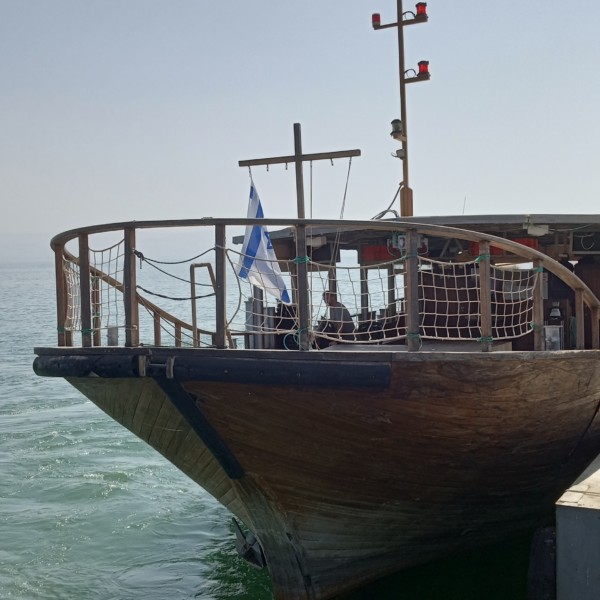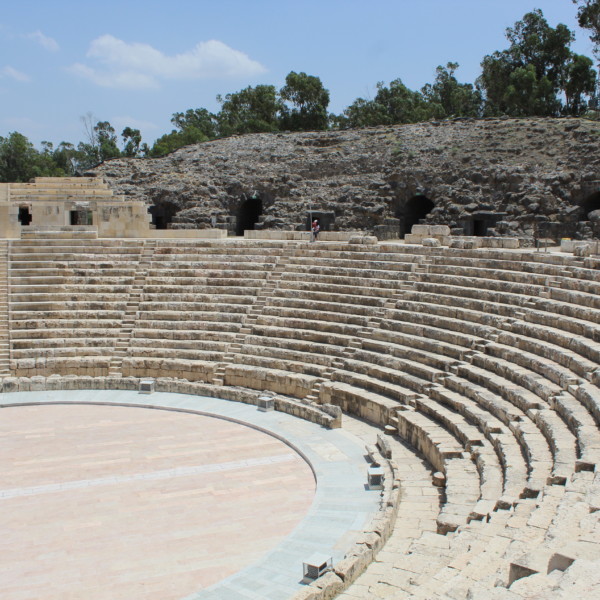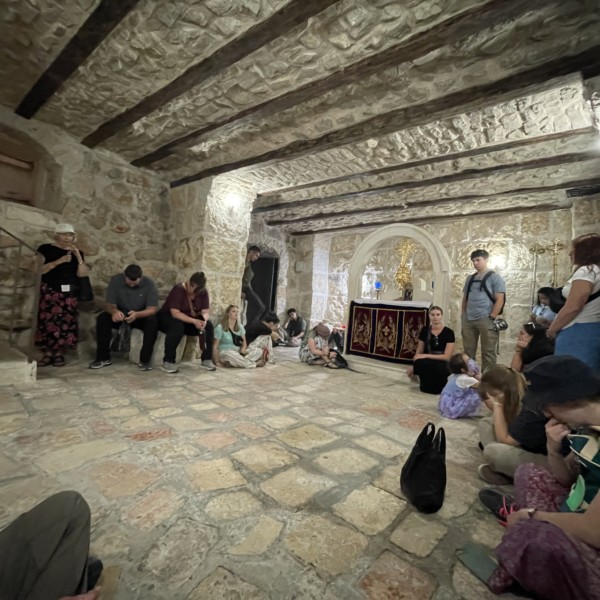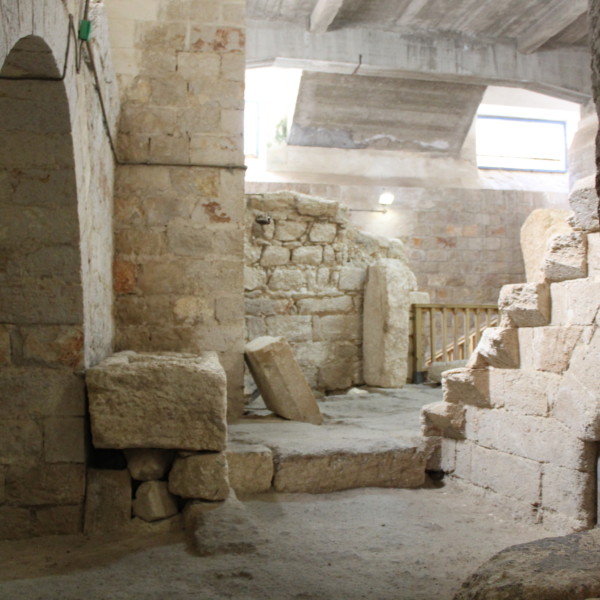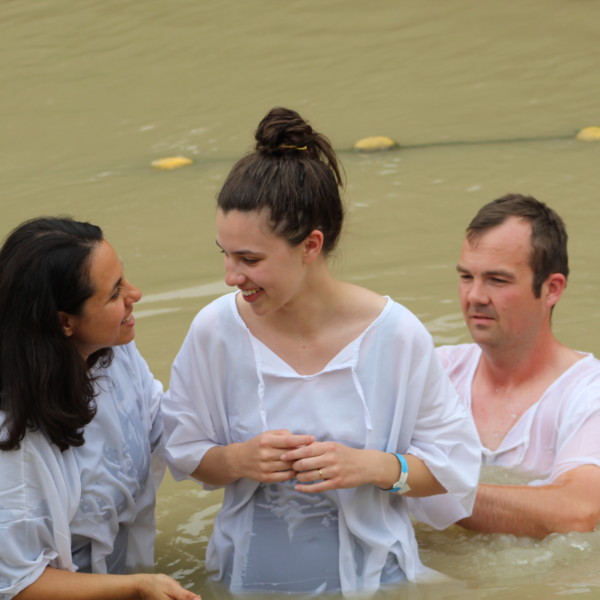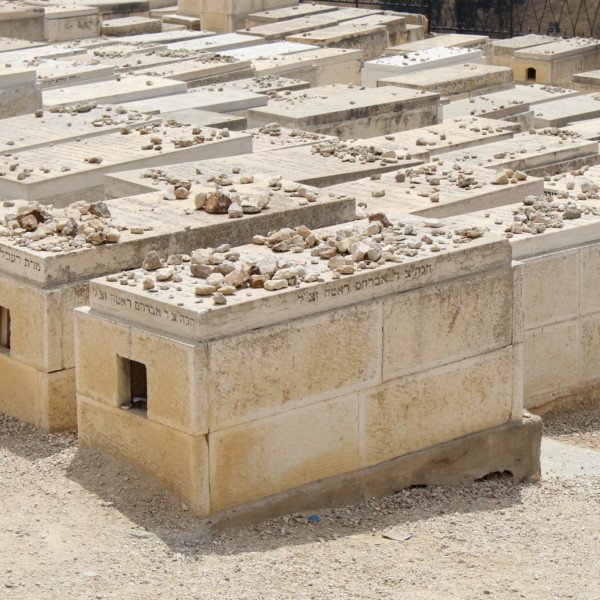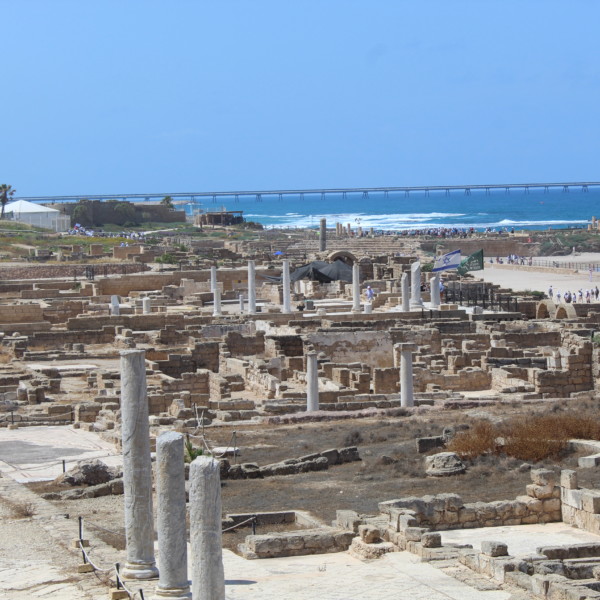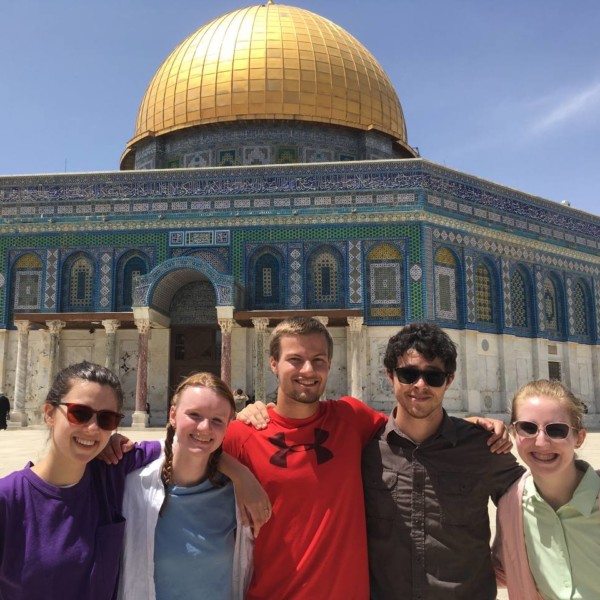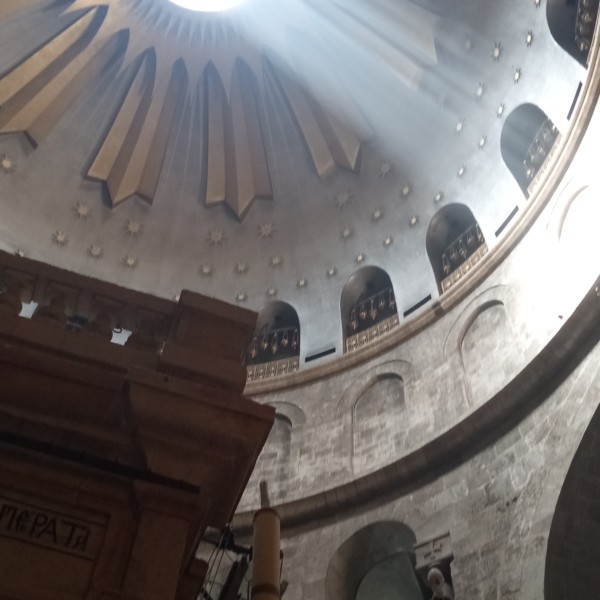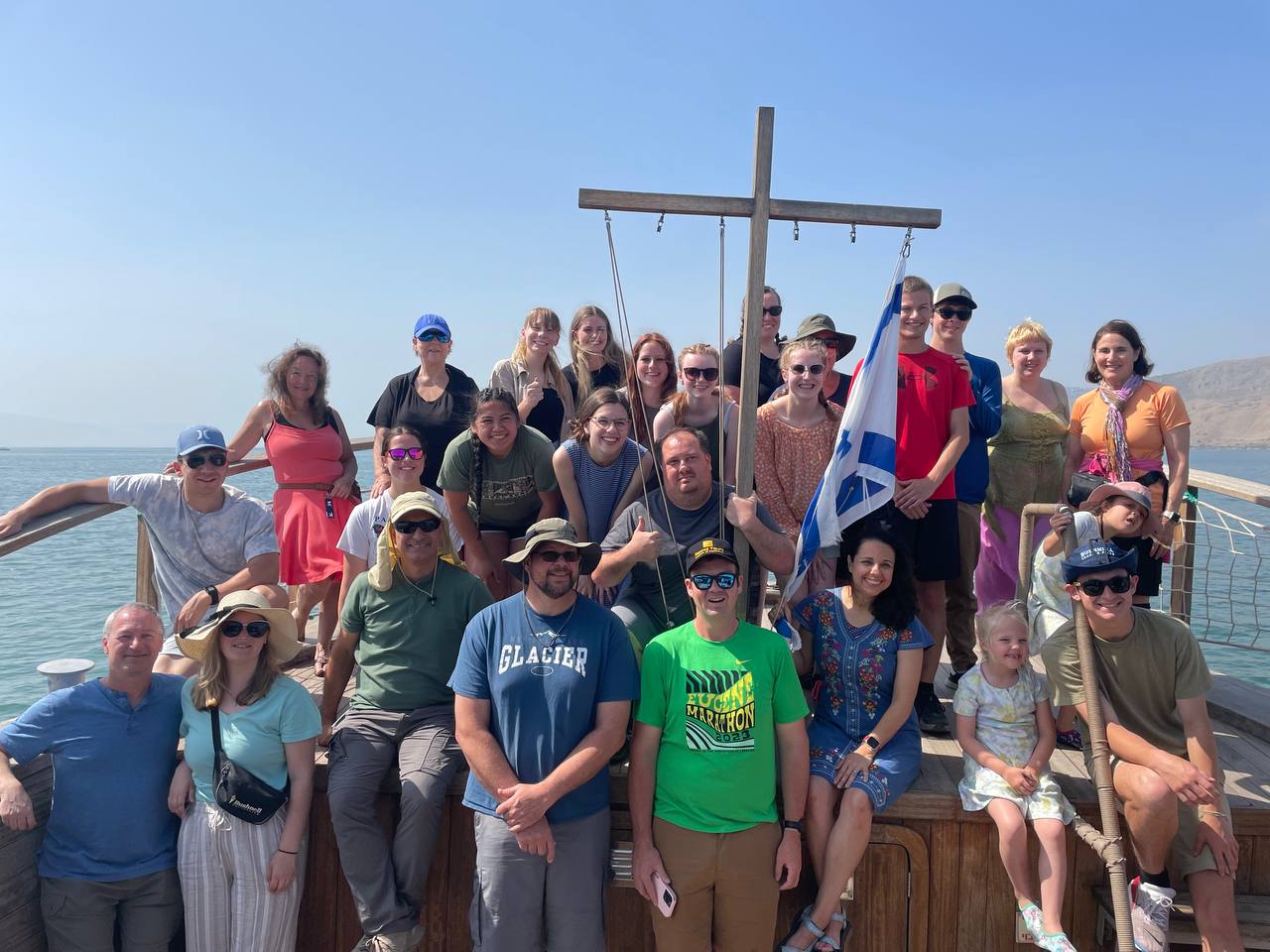
Written by Melisa Ortiz Berry, M.A.
Squeezing between the crowds at the Church of the Holy Sepulchre, our group followed an Armenian monk to a side door leading to an area below the main holy site. Walking down stone steps, we passed medieval crosses etched in the walls by the pilgrims who came before. As we continued past the chipped rock wall from the abandoned Roman quarry, we pushed on to visit something few people see and even fewer know about – the boat drawing in the Chapel of St. Helen.
This hidden chapel is where the Armenian Orthodox church commemorates the finding of the “True Cross” by Helena, Constantine the Great’s mother. For us, it was the location of a special archaeological find: the drawing of a ship with the Latin words “Domine Ivimus,” meaning “Lord, we went.” Here scholars have found early evidence of Christian pilgrimage, some dating it as early as the first century when rabbis’ tombs were marked by their followers. Was this an early testament to the location of Jesus’ burial?
With just moments available to visit the boat drawing, we took a quick look and then knelt to pray. The area that is now marked by the Church of the Holy Sepulchre is the space where early Christians testified to the location of the crucifixion, burial, and resurrection of Jesus. Here beneath the church in this forgotten basement, Bushnell students lifted their prayers to God. Now, from the comfort of my home in Eugene, I write to say, “Lord, we went.”
After several years of planning and waiting, my husband (Assistant Professor James Berry) and I were leading 26 Beacons through Israel. Our students studied the Bible and archeology with me and the Arab-Israeli conflict with James. We hoped to immerse them in the land of Israel, where they could look at both ancient stones and “living stones”, the modern people, to deepen their understanding of the world and their faith. We were hosted by Nazareth Evangelical College (NEC), who provided us with a wonderful first homebase in Nazareth and with friendly Christians to welcome and guide us.
The excitement of walking the streets of Nazareth near the Church of the Annunciation and worshiping with local residents was juxtaposed with stories shared by Arab Christians about the difficulties they encountered within the Jewish state. Even alongside the awe of walking where Jesus walked, we felt the divide between wealthier Jewish neighborhoods and more modest and even impoverished Arab areas. There was a tug between rejoicing for the Jews to be back in Israel and the resulting difficulties faced by others living in the land with them. This discomfort helped our students empathize with those caught in the Arab-Israeli conflict, including Jews, Arab Christians, and Arab Muslims. As their leaders, we hoped that this experience would help them to have empathy for the many different people living in Israel and to develop an unconditional agape love for all.
Looking back, I can see recurring themes around water, laughter, and devotion in our journey. Our NEC guide, Pierre, was in constant amazement with our group and kept saying, “Ninety-nine percent of people who come do not do these things.” What did we do that was so unique? We went off the beaten path. At the beginning of the trip, our student group traveled to Akko and walked through crusader ruins and then played in the Mediterranean Sea. We also visited the beach in Haifa and Tel Aviv and swam in the Sea of Galilee alongside local residents. While we shared the time constraints of most pilgrim groups, there were locations where we could just sit and enjoy the space, such as at the Church of the Annunciation. Here students not only saw the holy site and museum, but also had time to sit and reflect, read their Bibles, draw, and sing together by ukulele under the mother and child mosaics.
Then there was the laughter. Even on hot, dusty days we were able to enjoy sitting on the ruins of Roman toilets and improvise our own theater performances in ancient amphitheaters. When we came to a hippodrome in Caesarea Maritima, the place for chariot racing, members of our group lined up for their own race. Track and field athletes Brett Olmstead and Ephraim Webber led the pack as we cheered them all on.
Students also encountered Christ through student-led devotions at holy sites. Each student chose a location to speak at, and then at the site the student would read the scripture and share his or her thoughts. Abigail Askew presented our first devotional in Capernaum. She spoke near the ruins of what the evidence suggests was the apostle Peter’s house, which transitioned into a house church and then a Byzantine church. Standing at the head of our boat on the Sea of Galilee, Elizabeth Box gave her message on the faithfulness of Christ. Among the ancient olive trees at the Garden of Gethsemane, John Stephens reminded us that just as Jesus gave His all for us, we too need to give our all for Him. Retired Bushnell employee Karen Head, M.A.’22 read from a book of verses laid out for pilgrims in a small chapel in the Shepherd’s Fields in Bethlehem. She stood at the altar and read the story of the angels announcing the birth of our Lord. While I do not recall her exact words, I will always remember the tears she wiped away and the sound of her fellow Bushnell pilgrims singing around her when she finished.
Tears were not the only drops of water we felt. We experienced rare May rainfall while walking through the ruins of ancient Meggido which overlook the plains of Armageddon (yes, the Armageddon from Revelation). Adjunct Professor Dr. Lynn Jacobson, with her deep well of biblical knowledge and wisdom about Judaism, shared how rain after April in the desert lands of Israel is received with joy as a sign of blessing. By the end of our journey, it had rained on us three times – at the beginning, middle, and end of the trip – reminding us that whatever we were going through and wherever we found ourselves we were encountering the blessings of the Lord.
That same rain fell in Qumran, near where we entered the muddy waters of the Jordan at Qasr al-Yahud (near the Dead Sea) for baptisms and rededications. This site may not have been as picturesque as the more common baptism location by the Sea of Galilee, but it was part my desire to create an authentic experience. Locations like this helped bring Bible stories to life, such as the story in 2 Kings of Naaman the Aramite, a foreign military leader who asked Elisha for healing from his leprosy. At the word to dip in the Jordan he balked at the idea – weren’t the waters of the Damascus River fresh and clean? Was this a cruel joke? No. God chose the humble things of this world to shame the wise, even choosing the muddy rivers of the Jordan river as the location of our Lord’s (and our Bushnell pilgrims’) baptism.
Israel is a beautiful land filled with a rich history and wonderful people. It’s also a hard land with difficult realities. Our students were an amazing group that spanned multiple generations – ranging in age from six to seventy – and across Bushnell degree programs and schools. We were the first Study Abroad to have traditional undergraduates, online students, and graduate students. These students traveled to a special country to create lifelong memories and deepen their faith. I’m grateful for Bushnell University, a place where students can answer their calling into a variety of vocations at a Christ-centered university and come together to study abroad in the Holy Land. Like the pilgrims who came before, may we fondly remember, “Lord, we went.”
Dr. Melisa Ortiz Berry (@DrBerryDaily) has taught at Bushnell University for the past four years, most recently as the Associate Professor of History and World Christianity. To travel with her to Israel in 2024, email her at mberry@bushnell.edu.
